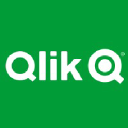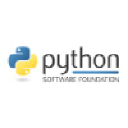Jupyter Notebook Review: Best Features and Pricing
Jupyter Notebook is a versatile tool designed for data analysis and coding tasks that offers an interactive and user-friendly environment, supporting multiple programming languages and enabling collaborative work.
With seamless integration of visualizations and interactive widgets, Jupyter Notebook provides professionals and businesses with an essential platform for conducting comprehensive data analysis and developing coding projects.
- Interactive and user-friendly interface for data analysis and coding
- Supports multiple programming languages, including Python, R, and Julia
- Seamless integration of visualizations and interactive widgets
- Enables collaborative work and sharing of documents

Pricing
Jupyter Notebook offers flexible pricing plans to suit the needs of individual users, teams, and organizations. Whether you're a data analyst, data scientist, or developer, there's a pricing option that aligns with your requirements.
Reviews
Users appreciate the versatility and efficiency of Jupyter Notebook, making it an indispensable tool for their data analysis and coding tasks. The interactive environment and diverse language support contribute to its positive feedback from professionals and businesses alike.
Features
Jupyter Notebook provides a range of features that empower users to conduct in-depth data analysis and develop comprehensive coding projects. Its interactive interface, versatility in supporting programming languages, and collaborative capabilities stand out as key advantages for professionals.
Functionality
The functionality of Jupyter Notebook extends across various domains, including data exploration, visualization, and model development. Its interactive widgets and seamless integration with other tools make it a preferred choice for professionals looking to streamline their data analysis workflows.
Usage
Professionals and businesses across diverse industries leverage Jupyter Notebook for tasks such as statistical modeling, machine learning, data visualization, and more. Its flexibility and adaptability cater to the evolving needs of data-driven organizations, making it a valuable asset for both individual users and collaborative teams.






















